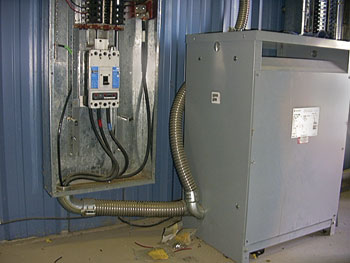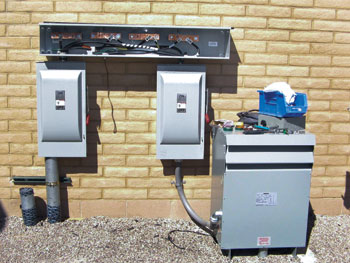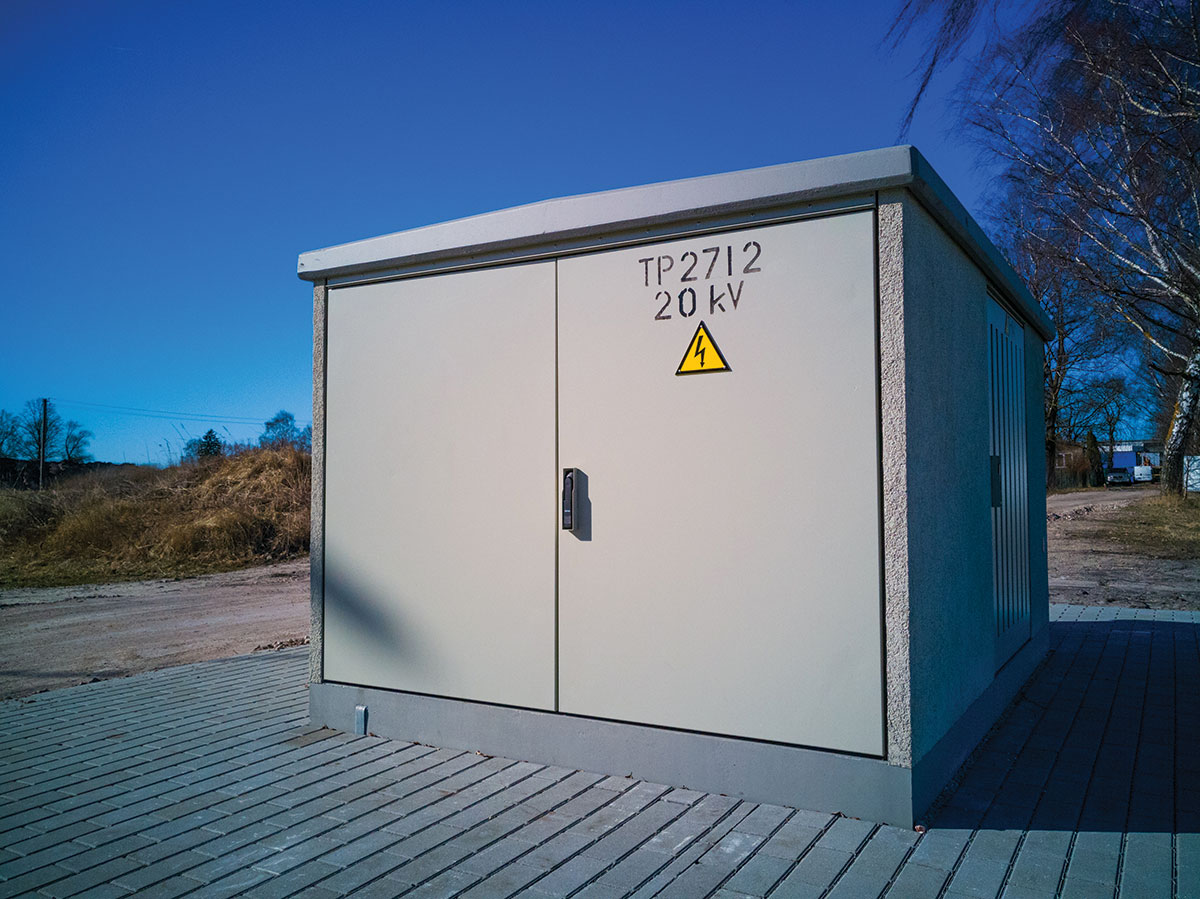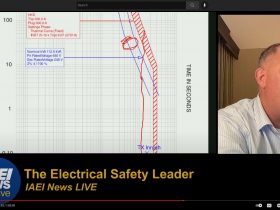There are some subjects in the Canadian Electrical Code that often become a source of heated discussions by the users.
Selection of dry type transformers and selection of a proper rating of the transformers’ circuits is one of such controversial subjects.
So, let’s try to clarify this seemingly complex issue.
First of all, we need to refresh the understanding of a circuit rating in accordance with Rule 8-104. This rule states that a rating of a circuit or a feeder is the ampere rating of the overcurrent device protecting the circuit or the ampacity of the circuit conductors, whichever is less. This rule also states that the calculated load in a circuit shall not exceed the ampere rating of the circuit (i.e., shall not exceed the rating of the circuit O/C device and the ampacity of the circuit conductors).
This requirement of Rule 8-104 is generic through the entire Code, and of course it applies to the transformer rules in Section 26. In fact, newly adopted Rule 26-260 emphasizes a need to comply with this requirement, when a selection of the O/C protection and conductors for a transformer circuit is made. Appendix B Note on Rule 26-260 provides a clarification of correlation of the selected transformer circuit rating with the actual calculated load connected to the transformer.

Photo 1. Dry type transformer with o/c device
Second, a brief review is in order of a unique purpose of a transformer in electrical installation. Does a transformer constitute a load?
Is it utilization equipment? Can a connected load exceed a rating of the transformer?
Let’s take a look.
A transformer is an “interface” between a supply voltage and a voltage of utilization equipment. Although a transformer is not utilization equipment, it is a load as it sustains inductive and active losses.
As a transformer is a part of the circuit supplying a load connected to the transformer secondary, the transformer must be rated not less than a circuit in which it operates. This means that the rating of the transformer must meet criteria of Rule 8-104(4) or (5) in respect to a continuous load connected to the transformer secondary.
However, the fact is that the available standard ratings of typical dry type transformers are not as flexible as standard ratings of overcurrent protective devices and conductor sizes, and sometimes a transformer could be oversized for the intended connected load.
However, the Code users should be cognizant that a rating of a transformer must be selected in coordination with the connected load, and if the transformer rating is a bit large for the load, any deviation from Rule 26-256(1) for the rating of the O/C device, and any deviation from the requirements of Rule 26-258(1) and (2) for the ampacity rating of primary and secondary conductors is adequately correlated with Rule 8-104(4) or (5).
Code users should also verify that rating of the panel-board protected by the primary O/C device conforms with Rule 8-104(4) or (5) in addition to the provision of Rule 14-606(2).
Let’s illustrate the above statements by an example as follows: As the building has an existing 347/600 V service and distribution system, a contractor needs to install a 75 kVA dry type transformer (primary rated current is 72 A and secondary rated current is 208 A) in order to supply a 120/208 V calculated load of 170 A in a commercial tenant unit.
The contractor would have to undertake the following steps:
(a) To verify whether the calculated load is continuous in accordance with Rule 8-104(3)
Note: In general, except for loads in a dwelling unit all loads are considered to be continuous, and provisions of Rule 8-104(4) or (5) must apply.
(b) To select the O/C device (a circuit breaker or a fused switch) on the primary of the transformer as per Rule 26-256(1)
Note: This O/C device could be marked for continuous operation at 100% of the ampere rating of its overcurrent devices or for continuous operation at 80% of the ampere rating of its overcurrent devices, and such selection will impact a relationship between the continuous connected load and the rating of the O/C device in accordance with Rule 8-104(4) or (5).
(c) To select the ampacity of primary and secondary conductors as per Rule 26-258(1) and (2) in accordance with Tables 1 – 4 as applicable
(d) To select a panelboard connected to the transformer secondary conductors. The panelboard will supply the continuous load of 170 A.
Note: a panelboard supplying a connected load is an extension of the secondary conductors, and it must meet the requirement of Rule 26-258(2). In addition, the panelboard would have to be protected by the primary O/C device in accordance with Rule 14-606(2).

Photo 2. Dry type transformer with fused switch
Now the contractor can proceed with the selection of the components for this installation. As the connected load is considered to be continuous, a standard 80% rated circuit breaker is selected on the transformer primary. The setting of the O/C for this circuit breaker shall not exceed 125% of the transformer rated primary current. This means that the setting of the O/C cannot exceed 72 A x 1.25 = 90 A. If the conductors are selected with the ampacity values based on Table 2 for this particular load, Rule 8-104(5)(a) would apply to make a correct coordination between the rating of the transformer circuit and the connected load. The contractor has two immediately obvious choices for selection of the O/C device, and these choices are: 90 A and 80 A.
As the standard 80% rated circuit breaker is selected for the purpose of Rule 8-104(5)(a), the contractor must check whether the connected continuous load does not exceed 80% of the selected setting of the primary O/C device. The O/C device (as seen on the secondary of the transformer) cannot be smaller than 170 A x 1.25 = 212.5 A. A 90-A setting will yield 90 A x 2.88 = 259.2 A. This value will satisfy criteria of Rule 8-104(5)(a). A setting of 80 A will yield 230.4 A on the transformer secondary, and this value will also meet the criteria of Rule 8-104(5)(a) as it is larger than the minimum permitted value of 212.5 A.
Let’s say that 80-A setting of the primary O/C is selected.
Now, the contractor must use Table 2 to select the ampacity of primary conductors as per Rule 26-258(1) not less than 90 A (3 AWG is selected with the ampacity of 105 A). Respectively, the ampacity of the secondary conductors cannot be smaller than 125% of the secondary rated current of the transformer (i.e., not less than 208 A x 1.25 = 260 A). Therefore 250 MCM would be selected from Table 2 with the ampacity of 265 A. The selected primary and secondary conductors would also meet provisions of Rule 8-104(5)(a).
The next step is the selection of the panelboard. If the contractor plans to install a standard 200-A panel-board [which will also have to meet the condition of Rule 8-104(5)(a)], this panelboard must be checked for compliance with Rule 14-606(2).
Now it appears that the requirement of this rule is not met, as the 80-A trip setting on the transformer primary represents 230.4 A on the secondary (which exceeds the 200-A rating of the panelboard). In order to meet the criteria of Rule 14-606(2), the primary O/C device cannot exceed 200 A : 2.88 = 69.45 A. This situation leaves the contractor with the third (not very obvious choice) of selecting the setting of the primary O/C device. This choice means that a circuit breaker with a standard 70-A trip setting would adequately protect the panelboard.
Although 70 A exceeds maximum allowed 69.45 A, this standard rating would be permitted under Rule 26-256(3) and under a generic relaxation allowed by Rule 8-106(1).
But would a selected 70-A setting violate Rule 26-256(1), as this selected setting is a bit smaller than the transformer rated primary current of 72 A? The answer is “No.”
Provisions of Rule 8-106(1) specifically address this matter. However, it’s advisable to remember that too low a rating of the primary O/C device could result in unintended trip of the device when the transformer is being energized, and Appendix B Note on Rule 26-256 provides a cautionary warning to the code users in this regard. However, if the 70-A setting is, in fact, selected, then the circuit breaker now would have to be rated for 100% of continuous operation; otherwise, a 70-A setting on the primary will represent 202 A on the secondary, and this value would be smaller than 125% of the continuous connected load of 170 A under the condition of Rule 8-104(5)(a).
If the contractor selects a 100% rated circuit breaker, then Rule 8-104(4)(a) would have to be used, and 202 A on the transformer secondary would satisfy requirement of this rule.
In fact, selection of a 70-A setting for the primary 100% rated circuit breaker would allow the contractor to use Rule 26-258(3) for reduction of primary and secondary conductors. Now, the ampacity of primary conductors would have to be not smaller than 70 A, and 4 AWG primary conductors could be chosen from Table 2.
Respectively, the secondary conductors would need to have the ampacity not smaller than 202 A, and 3/0 conductors would be permitted for use on the transformer secondary. This approach would yield significant savings to the contractor, and all applicable provisions of the CE Code would be met.
It should be noted that if a Code user chooses to utilize a free air rated primary or secondary conductors (if a free air rating is allowed by the Code requirements), in accordance with Rule 8-104 the continuous load connected to the transformer cannot exceed 85% of the rating of the transformer circuit—if the O/C device is marked for 100% of continuous operation, or cannot exceed 70% of the rating of the transformer circuit—if a standard 80% rated fused switch or a circuit breaker is used as per Rule 26-256(1).
The exercise shown in the example above could be particularly useful when a designer or installer utilizes a larger transformer (i.e., 300 kVA) and wants to install a 1000-A panelboard on the transformer secondary for the applicable connected load. A typical 300-kVA transformer would have to be protected on the 600-V primary by a 400-A O/C device, and such O/C device would be represented on the 120/208-V secondary by 1152 A, therefore requiring installation of a 1200-A panelboard. But use of a 350-A setting (with evaluation of the precautions as recommended by Appendix B Note on Rule 26-256) and with evaluation of all other relevant coordination aspects with Rule 8-104, would allow the installer to select a 1000-A rated panelboard. Accordingly, sizes of the primary and secondary conductors could be reduced in conformance with Rule 26-258(3).
However, as usual, a consultation with the AHJ administering the CE Code in a specific jurisdiction is necessary before any deviation from the Code requirements on this subject is contemplated.










Find Us on Socials